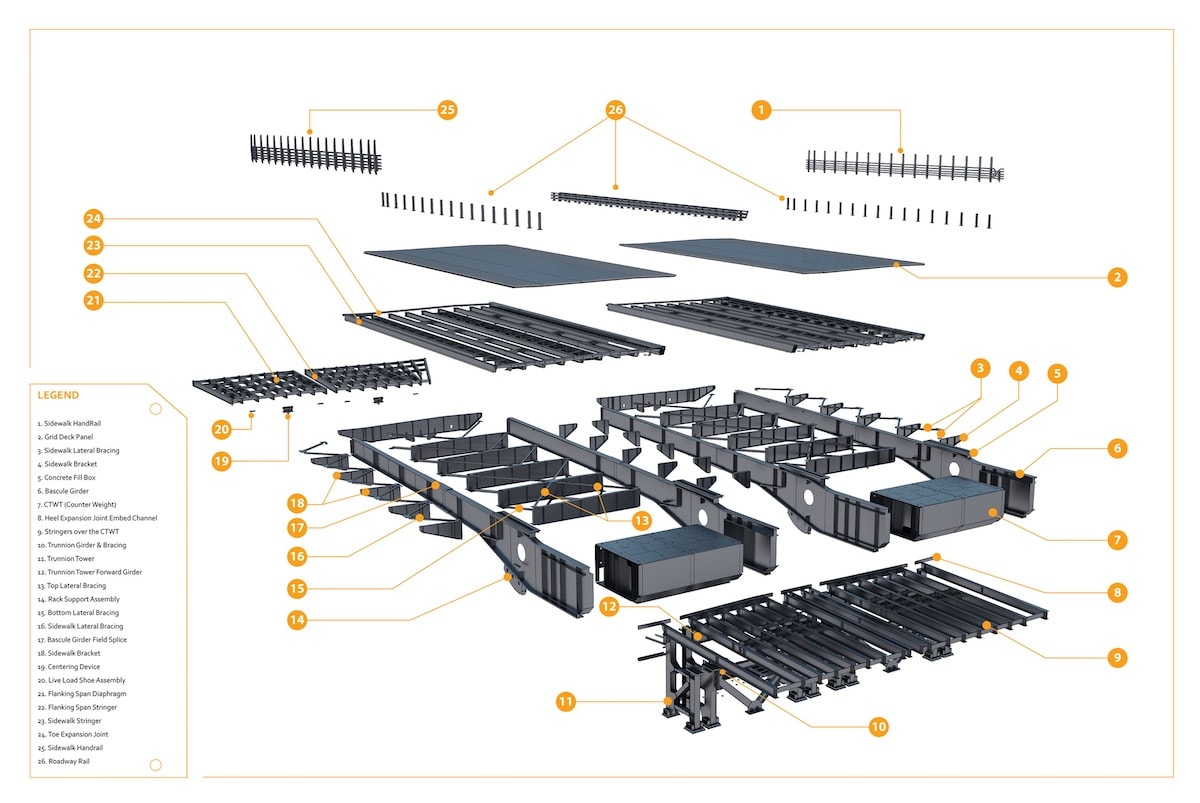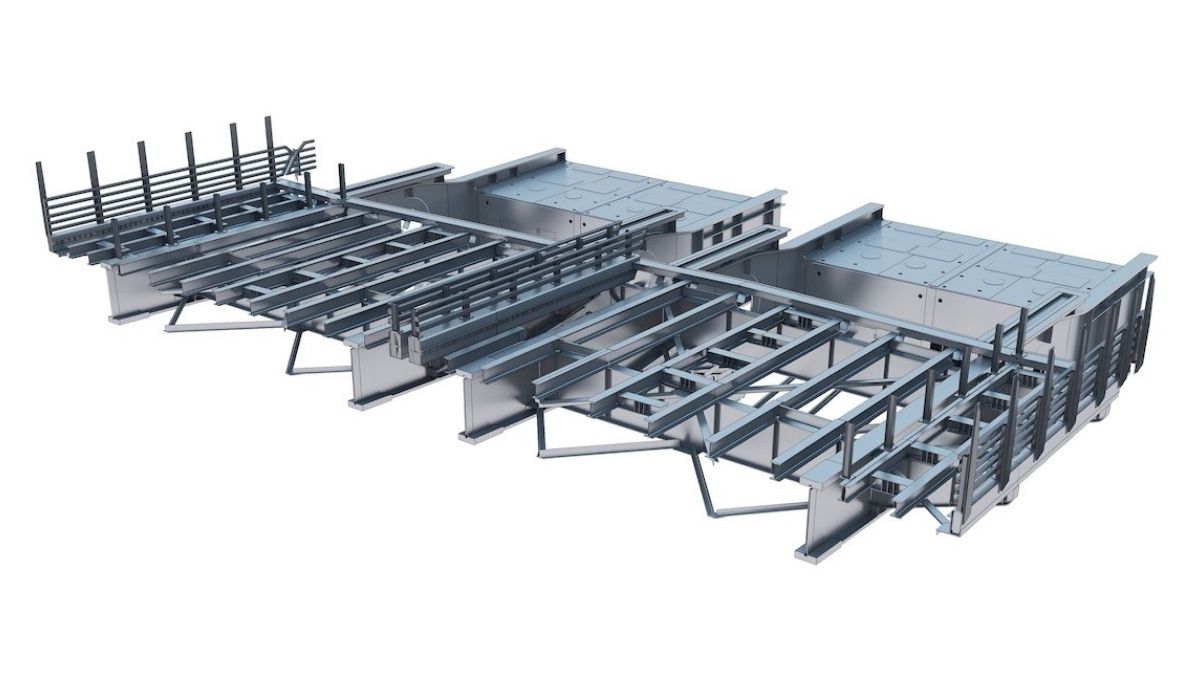Traditionally, steel detailers, fabricators and erectors used 2D drawings during the planning and construction phases of a project. While AutoCAD 2D drawings are able to communicate a vast amount of information, 3D steel detailing has revolutionized the construction modeling process. It enables previously unattainable levels of accuracy, detail and visualization, which are becoming more and more vital as the fabrication industry adopts advanced technology such as automation and other digital solutions.
BrIM and BIM modeling software like Tekla has transformed the way steel is designed, detailed, and fabricated, particularly for large-scale bridge, commercial and industrial projects. With more projects delivered through a design-build construction methodology—particularly large-scale and increasingly complex projects—high-quality fabrication simply would not be possible using 2D fabrication drawings. Delivery of these huge, technically difficult projects is only possible with ever-evolving 3D models and software.
The transition towards 3D steel detailing offers engineers, fabricators and asset owners many benefits. This helps ensure the integrity of structural steel and increases efficiency throughout all stages of the project’s lifecycle, from planning and fabrication through to construction and maintenance.

The Benefits of 3D Steel Detailing
Interactive Development to Reduce Mistakes
Bridge Information Modeling (BrIM) and BIM modeling help to streamline the design process by checking fit ups and identifying clashes in real time. Additionally, it enables the resolution of design discrepancies, geometry and intent early on in the process. Mistakes are mitigated before fabrication and erection, reducing the need for additional and unnecessary labor and material costs.
Information Management to Track and Manipulate Elements
3D detailing leverages a data-centric, intelligent model that enables the management of a wide range of information. For example, it is able to efficiently track weld data for high security projects, such as ID numbers, weld links, types of welds, specific notes and more.
Additionally, 3D detailing is able to identify, track, manipulate and extract any steel member, bolt, weld or any other element within the model.
Visual Productivity to Streamline Reporting
While a 2D process is unable to visually track productivity, 3D models can help to streamline reporting. For example, DBM Vircon is able to extract color coded progress updates via access to the model, or snapshots of the model. These are clear and concise and demonstrate progress within the model, as well as any associated deliverables.
Barcode and Tracking to Increase Planning Accuracy
3D models enable increased accuracy and are able to find planning efficiency through detailed material tracking, from ordering and fabrication, through to transportation and erection. This means that timeframes are able to be accurately predicted and strictly adhered to.
In-Model Approvals to Save Time and Costs
By reviewing and accepting members in model before creating shop drawings, 3D modeling helps to save time and costs as well as minimizing miscommunications. Additionally, in-model approvals improve efficiency and productivity; shop drawings are not produced until all details in the model have been signed and approved.
4D Planning for Efficient Scheduling
BrIM and BIM coordination enables efficiency when scheduling complex builds while managing different sequences. This efficient scheduling allows for increased timeline accuracy, which is incredibly important for gaining the confidence of stakeholders.
Laser Scanning for Accurate Back Modeling
With 3D modeling, the ease of exporting data files (CNC, DFX, 3D IFC) for the owner, contractor or fabricator means that downstream savings can be achieved.
Additionally, 3D modeling is able to use laser scanning and drones to scan an existing structure and then use the point cloud to back model the structure. This is particularly helpful when it comes to as-built structures that are undergoing rehabilitation or scenarios in which steel is being retrofitted to structures for which only 2D drawings are available. This scanning also helps to confirm 3D theoretical models.
Conclusion
While traditional 2D drawings are useful in the planning and construction parts of a project, advanced 3D modeling from DBM Vircon offers defined detailing for engineers, asset owners and fabricators. Our advanced software, like BrIM and BIM programs like Tekla, create highly accurate and constructible 3D models for all materials. By utilizing this state-of-the-art 3D technology, our project stakeholders gain a holistic understanding of how their project will come together and brings an extra layer of accuracy and efficiency.
In addition, our collaborative approach to steel detailing means that our 3D visualizations are shared with other project partners in a clear and prompt manner. Our two-way, interactive communication provides support across the design-build-manage lifecycle and can be tailored towards your needs to reduce extra expenditure and meet tight project deadlines.



